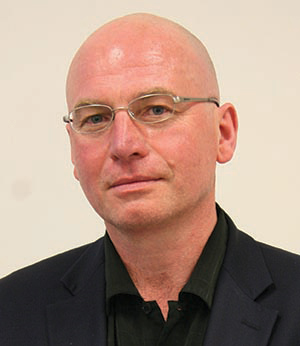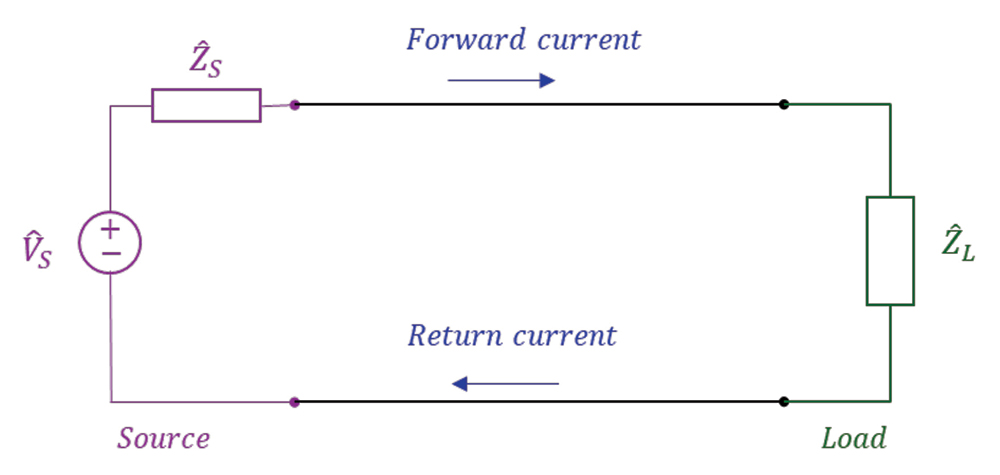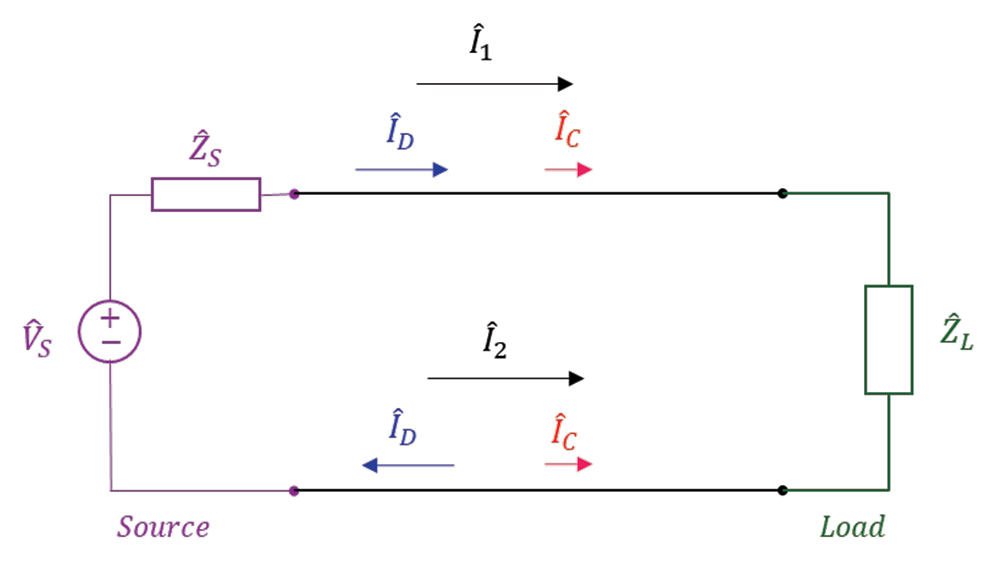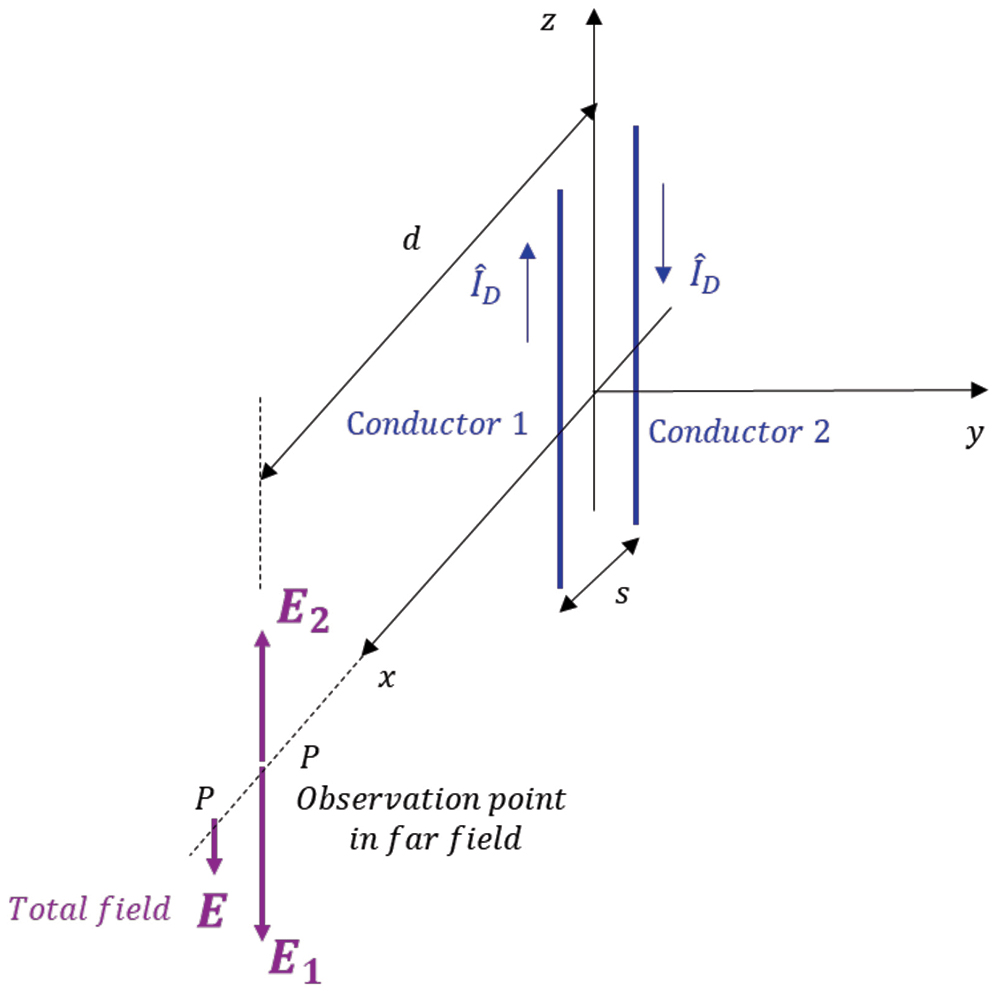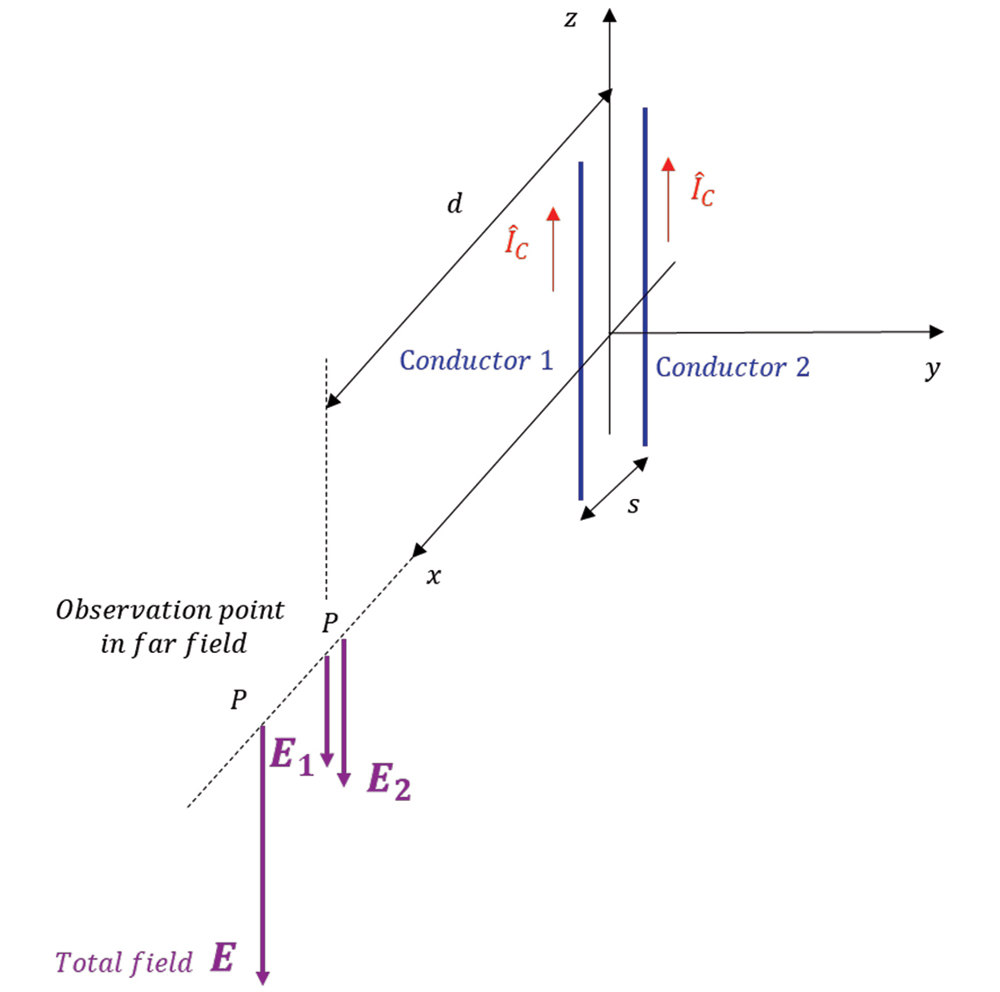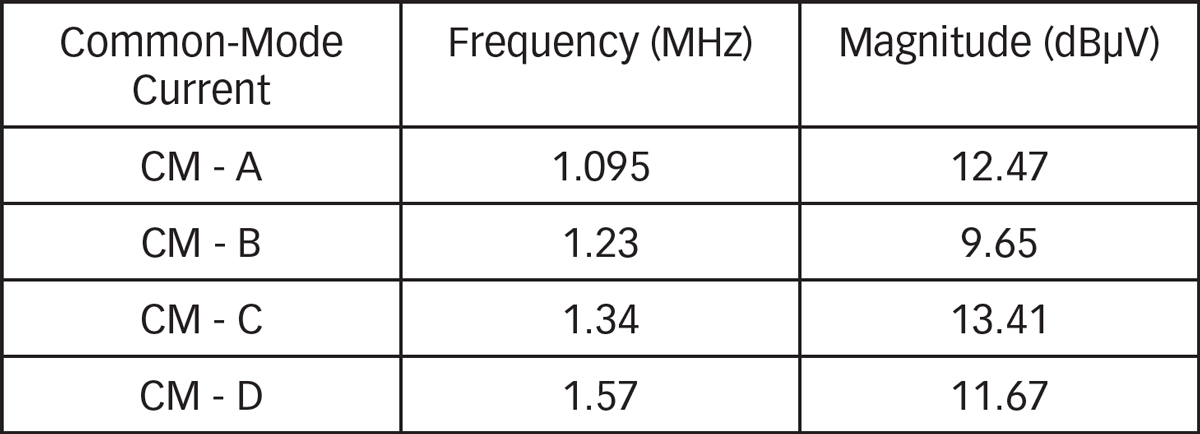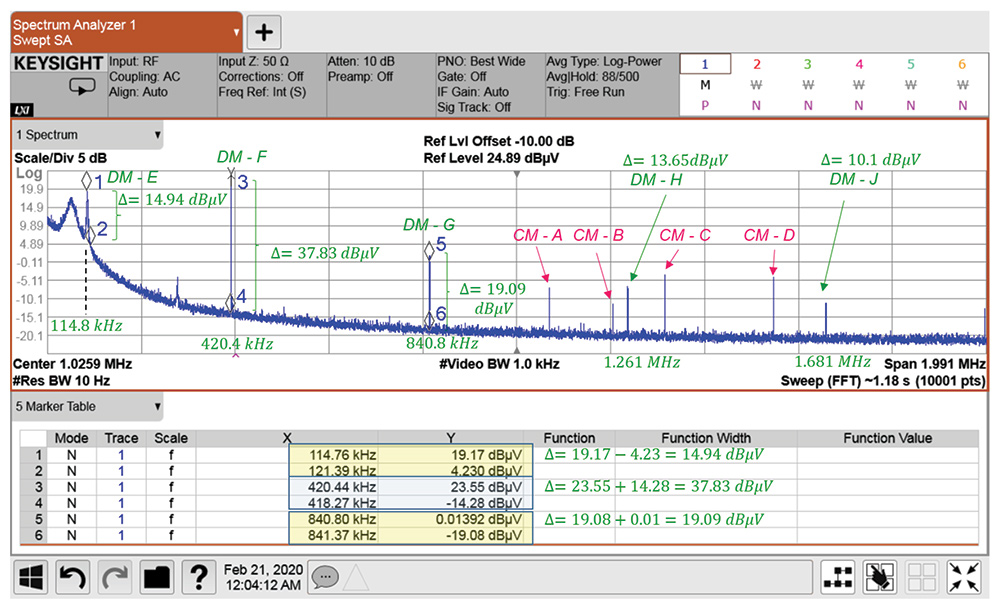Measuring Differential- and Common-Mode Current Radiation from Cables
his article discusses the common-mode and differential-mode radiation from cables and presents the measurement results from the SMPS connecting wires.
If the fields generated by the forward current cancel the fields of the return currents and no other circuits, or sources, or coupling paths are present, then the forward current equals the return current. In virtually any practical circuit a different scenario takes place, as shown in Figure 2.
ÎD is referred to as the differential-mode (DM) current while ÎC is referred to as the common-mode (CM) current. The DM currents are usually the functional currents, they are equal in magnitude and of opposite directions. The CM (unwanted) currents are equal in magnitude and of the same direction (See [1] for the discussion of the CM current creation).
The total currents Î1 and Î2 flowing are related to the DM and CM currents by

Let’s begin with the DM radiation. Consider the scenario shown in Figure 3. where two linear antennas (conductor 1 and conductor 2) placed along the x-axis, carry the differential-mode currents along the z-direction.
The maximum radiated field is broadside to the antenna (in the xy-plane, where θ = 90° and in the z-direction, as shown. Note that the radiated fields due to both conductors are of opposite directions, giving a small total radiated field as shown. This total radiated field at the observation point in the far field can be obtained by superimposing the fields due to each antenna.
Treating each antenna as a linear dipole of length l, the magnitude of the total field at a distance d from the antennas is, [2],

Now, consider the scenario shown in Figure 4. where two linear antennas carry the common-mode currents.
The radiated fields due to both conductors are of same directions, thus reinforcing each other to give the total radiated field as shown. The magnitude of the total field at a distance d from the antennas is

For instance, it takes only 8 µA of the CM current to exceed the FCC Class B limit of 100 µV/m at a distance of 3m, as the following calculations show. From Eq. (2) we can calculate the expression for the CM-current in terms of the maximum allowable field strength, [3].

It is, therefore, no surprise that the CM current is of great interest (or fear) to the EMC engineers. Next, we will discuss the DM- and CM-current measurements from the cables connecting a SMPS.
The current probe used is shown in Figure 6.

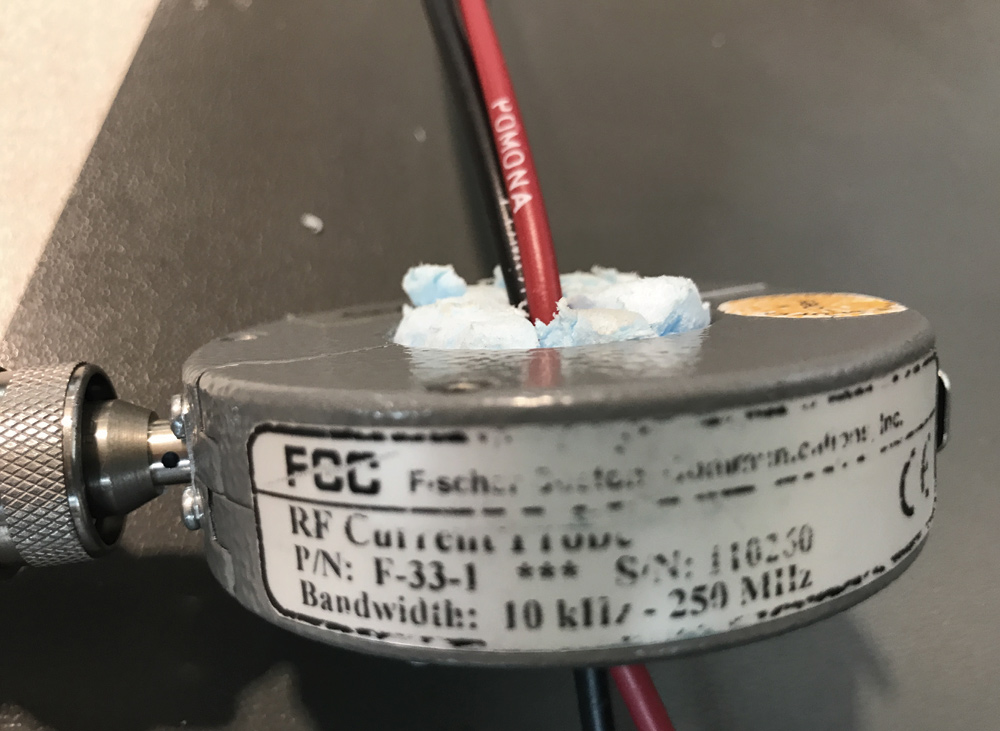
The CM currents were measured with the current probe, where both the power and ground wires were placed inside the current probe, as shown in Figure 7.
With both wires inside the probe, the differential current fields (ideally) cancel each other, and the current probe measures only the common-mode currents. To be precise, it (ideally) measures twice the value of the CM current, i.e., 2IC. The measurement results are shown in Figure 8 and summarized in Table 1.
Next, let’s measure the differential-mode currents. The DM currents were measured with two different setups: current probe over the ground wire and the current probe over the power wire, as shown in Figure 9.
The measurement results with the probe over the ground line are shown in Figure 10, while the results for the power line are shown in Figure 11. Both results are summarized in Table 2.
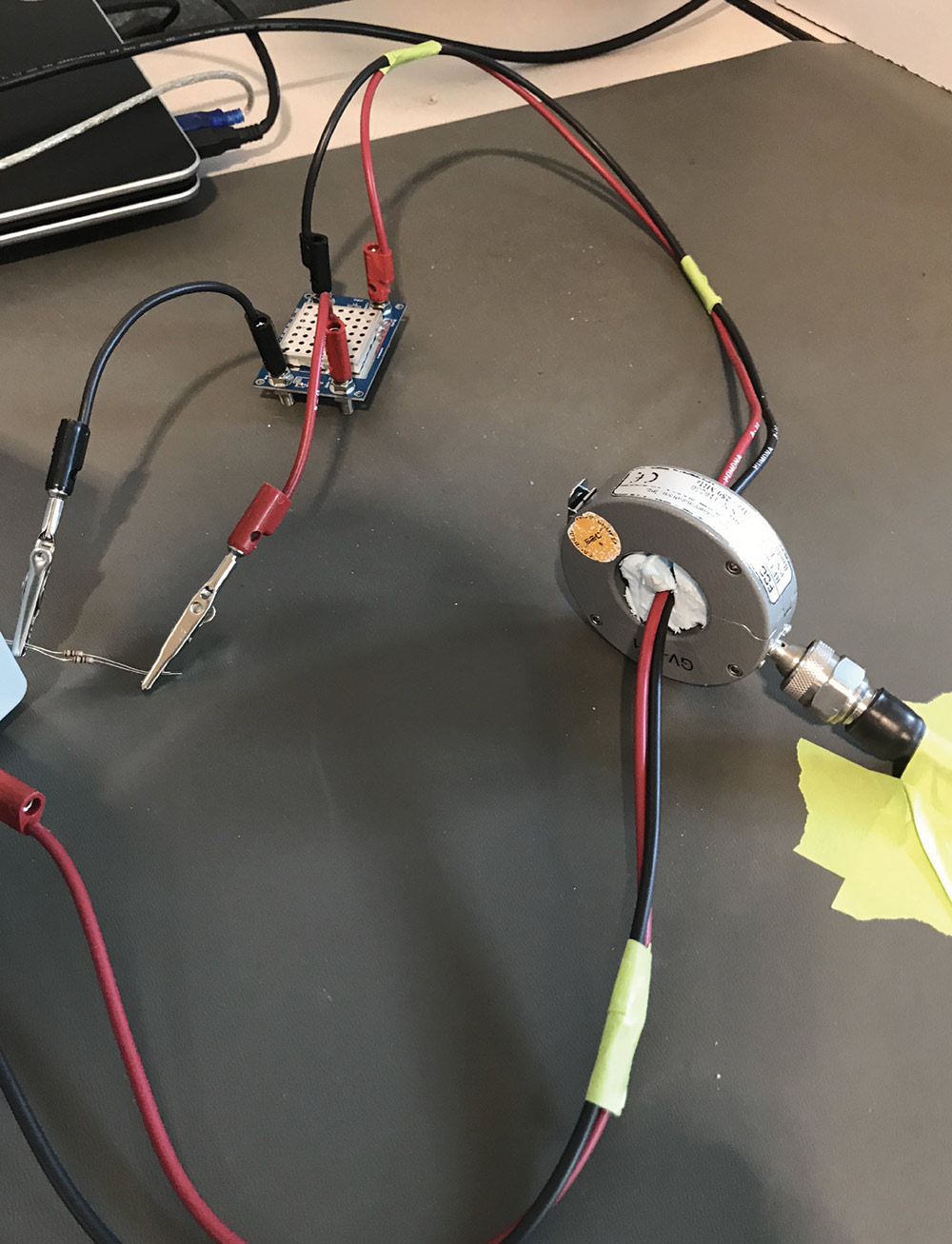
- Bogdan Adamczyk, Common-Mode Current Creation and Suppression, In Compliance Magazine, August 2019.
- Bogdan Adamczyk, Foundations of Electromagnetic Compatibility with Practical Applications, Wiley, 2017.
- Henry W. Ott, Electromagnetic Compatibility Engineering, Wiley, 2009.
